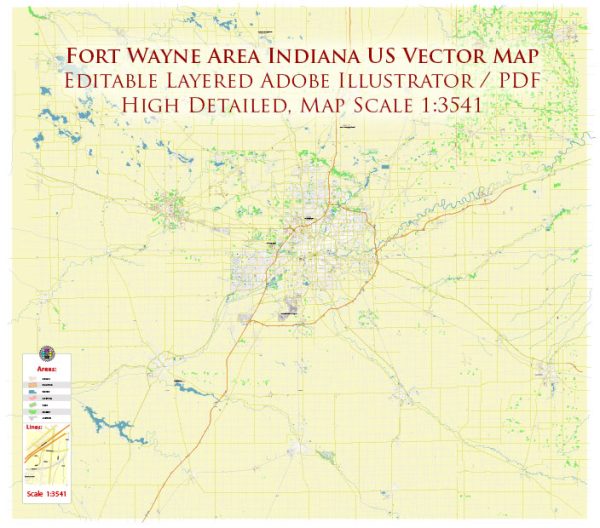Fort Wayne, Indiana, is a city located in the northeastern part of the state. It has a rich history that dates back to the early 19th century. Here is a brief overview of the history and description of the Fort Wayne area:
- Native American Heritage: Before European settlers arrived, the area now known as Fort Wayne was inhabited by various Native American tribes, including the Miami and Potawatomi. The convergence of the St. Joseph, St. Marys, and Maumee rivers made the region a significant trade and transportation hub for these indigenous peoples.
- European Settlement: The first European settlement in the area was a trading post established in 1794 by Jean François Hamtramck, a French-Canadian military officer. In 1795, the United States established Fort Wayne as a military garrison, which played a crucial role in protecting American interests in the Northwest Territory.
- Treaty of St. Mary’s: The Treaty of St. Mary’s in 1818 saw the Native American tribes cede their land in the Fort Wayne area to the United States, leading to the influx of European-American settlers. The city was officially incorporated in 1840.
- Transportation Hub: Fort Wayne’s strategic location at the confluence of three rivers and its proximity to the Wabash and Erie Canal in the 1830s contributed to its growth as a transportation and trade center in the Midwest. The arrival of the railroad in the mid-19th century further boosted the city’s industrial and commercial development.
- Industrialization: The late 19th and early 20th centuries saw Fort Wayne become an industrial powerhouse, with numerous manufacturing companies specializing in products like automobiles, electrical equipment, and consumer goods. Some notable companies, such as General Electric and International Harvester, established operations in the city.
- Cultural and Educational Hub: Fort Wayne is home to various cultural and educational institutions, including the Fort Wayne Museum of Art, Fort Wayne Children’s Zoo, and the Fort Wayne Philharmonic Orchestra. It is also the seat of Allen County and hosts several institutions of higher education, including Indiana Institute of Technology and the University of Saint Francis.
- Military History: Fort Wayne’s history is closely tied to the military, with various forts playing essential roles in the city’s development. The Old Fort, a replica of the original 1816 fort, serves as a living history museum and a reminder of the city’s military heritage.
- Modern Era: Today, Fort Wayne is a vibrant city known for its diverse economy, cultural attractions, and a strong sense of community. It has a population of over 250,000 residents, making it the second-largest city in Indiana. The city has a thriving arts scene, a revitalized downtown area, and a range of recreational opportunities.
Fort Wayne’s history is a testament to its resilience and adaptability, as it has transitioned from a military outpost and transportation hub to a modern, thriving city with a rich cultural heritage. The city continues to evolve and grow, with a focus on preserving its historical roots while embracing the opportunities of the future.


 Author: Kirill Shrayber, Ph.D.
Author: Kirill Shrayber, Ph.D.